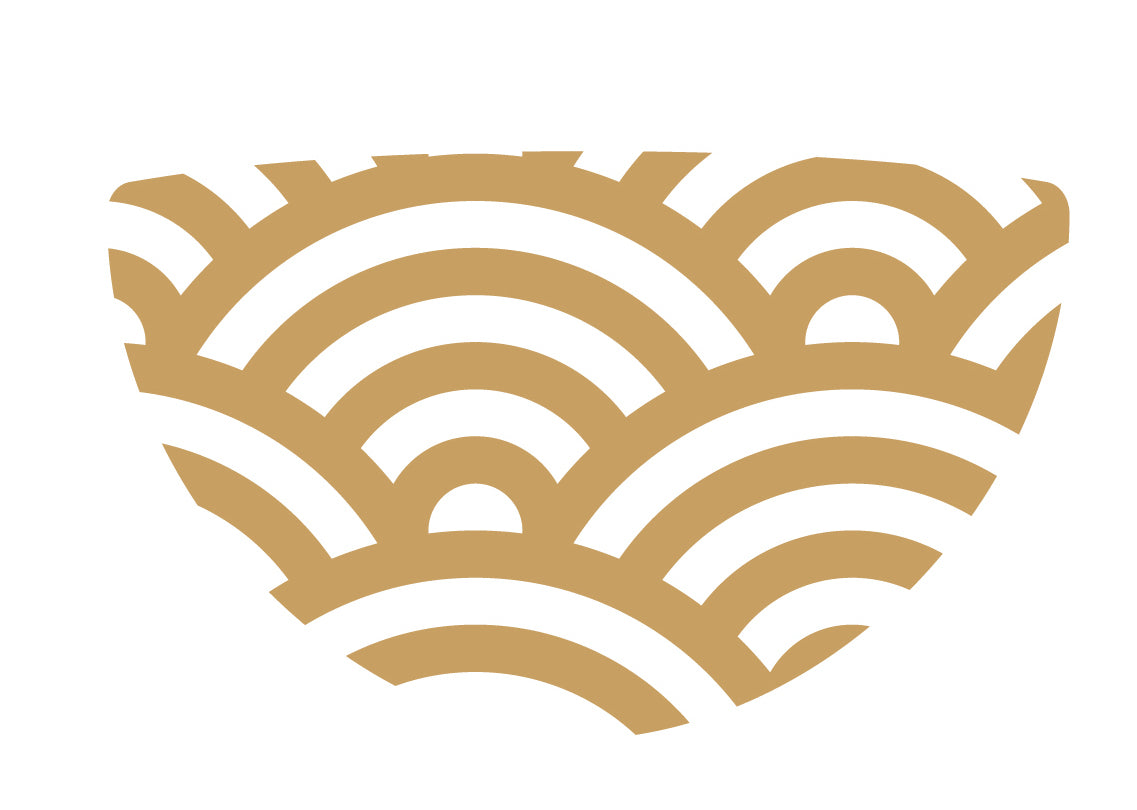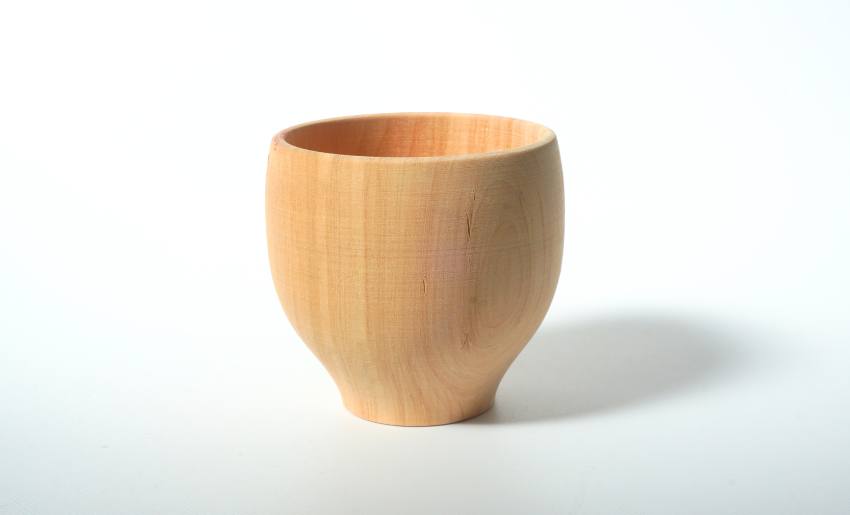Many people who are interested in kintsugi or have already purchased our kintsugi kit often ask, "Can kintsugi be used to repair wooden or lacquerware items?"
In this article, we will address common questions about repairing wooden and lacquerware items using our Tsugu Kit.
Table of Contents
- Can Kintsugi Be Used to Repair Broken Wooden or Lacquerware Items?
- Can the Tsugu Kit Be Used to Repair Wood and Lacquerware?
- Can the Tsugu Kit Be Used to Restore Maki-e on Lacquerware?
- Can I Use Leftover Raw Urushi in Tsugu Kit for Other Purposes?
- How Do I Apply Raw Urushi Lacquer to Bare Wood?
- Conclusion
Can Kintsugi Be Used to Repair Broken Wooden or Lacquerware Items?
Kintsugi is primarily used for repairing ceramics and porcelain. Since wood and lacquerware are different materials, the repair process differs, and using kintsugi methods may not yield satisfactory results.
Wood absorbs lacquer quickly, which can cause staining around the repaired area, making fine gold lines difficult to achieve. Additionally, dried-out lacquerware can shrink or deform, making it harder to create a seamless repair.
Lacquer-coated surfaces and delicate maki-e designs are also prone to damage from sanding, which is often required in the kintsugi process. Extra precautions, such as using masking tape, are necessary when applying repair materials and sanding on the sabi-urushi.

▲ Glass is also protected with masking tape before applying sabi-urushi.
Given these challenges, if you want a precise and high-quality repair for valuable lacquerware, we recommend consulting a professional restoration specialist.
Can the Tsugu Kit Be Used to Repair Wood and Lacquerware?
Our kintsugi kit, "Tsugu Kit" is designed specifically for repairing ceramics and porcelain using real urushi lacquer. While it may be possible to use it for lacquerware, lacquerware is highly delicate and requires advanced skills.
In short, we do not recommend using our Tsugu Kit for lacquerware repairs. However, depending on the type of item and the type of damage, some pieces may be repairable in a kintsugi-like manner, though specific precautions must be taken. Currently, there is no widely available kit or tools specifically designed for properly restoring wooden or lacquerware items.
Below, I will explain the difficulties and important points to keep in mind when repairing wooden products or lacquerware using a process of kintsugi.
Can the Tsugu Kit Be Used to Restore Maki-e on Lacquerware?

Maki-e is a decorative technique that involves painting patterns with lacquer and sprinkling gold or silver powder. The Tsugu Kit contains bengal-red/black powder, urushi lacquer, and gold powder, which is used for maki-e.
We also offer a specialized "Maki-e Kit" for this purpose, which includes instructions and videos only in Japanese and is available for purchase exclusively in Japan.
With the Tsugu Kit, you can create maki-e designs using gold, silver, bengal-red, and black. However, the Maki-e Kit includes a wider variety of colored powders, allowing you to paint in many different colors.
If there is significant demand from overseas, we may consider making it available internationally in the future.
Maki-e Kit Product Page on Tsugu Tsugu Japanese Online Shop
Regardless of which kit is used, it is difficult to achieve an exact restoration of the original maki-e in terms of design, texture, and finish. Differences in lacquer color, thickness, and types of metal powder used can lead to variations in appearance. The Maki-e Kit is designed for creating new decorative designs rather than for restoring old maki-e.
A more challenging restoration involves repairing aged lacquerware with large sections of flaking lacquer. This type of repair requires advanced skills, as achieving a smooth and consistent finish is difficult. Even if multiple layers of matching lacquer are applied, differences in color and texture may result in a patchy appearance.
For a more seamless restoration, we recommend consulting the store where the lacquerware was purchased.
Can I Use Leftover Raw Urushi in Tsugu Kit for Other Purposes?

Yes. If you have leftover raw urushi from a kintsugi project, it can be used to coat and reinforce worn wooden utensils/tableware. For example, lightly applying lacquer to the tips of worn-out wooden chopsticks/cutlery and letting them dry repeatedly can strengthen them for continued use.
A friend of mine used leftover lacquer to coat a bare wooden cutting board from a dollar store, spread the raw urushi on the entire board using the spatula included in the Tsugu Kit. Then, wiped off the excess raw urushi with a cloth, drying it in a urushi drying chamber, and repeated these processes three times. Urushi lacquer has natural antibacterial properties, making it a great option for food-related items.
I personally used the raw urushi to coat a wooden stir-fry spatula. Since I prefer to avoid plastic coatings and metal spatulas can scratch cookware, applying raw urushi has allowed me to use my spatula worry-free. If it wears down, I simply reapply lacquer.
However, raw urushi should only be applied to unfinished wood. It may not adhere well to surfaces with existing coatings or synthetic finishes.
The raw urushi lacquer has a shelf life of one year. We highly recommend replacing it after one year.
How Do I Apply Raw Urushi Lacquer to Bare Wood?

Authentic wooden lacquerware is created by applying multiple layers of urushi lacquer. The process of "wiping lacquer" (fuki-urushi) involves applying lacquer, wiping off the excess, and allowing it to dry in a urushi drying chamber—repeating the process multiple times.
The first coat of lacquer is heavily absorbed by the wood, and a single application does not provide strong waterproofing. Additionally, uneven application may be noticeable. Traditional lacquer craftsmen build up multiple layers for a beautiful finish.
For example, the fuki-urushi finish in the following photo was created by applying lacquer 16 times. It is not made with pure raw urushi alone. During the process, a special lacquer called "hachi-sabi urushi," which is a mixture of rice paste, polishing powder, and urushi lacquer, was used to fill in the surface and smooth out any unevenness. Finally, it was polished using the other types of fine polishing powder for a glossy finish.
I assume that you don’t want to go that far with traditional lacquer application. Then, for proper protection, at least three to six coats of raw urushi on bare wood are recommended, though high-quality finishes may require up to sixteen layers.
Conclusion
While our Tsugu Kit contains real urushi lacquer and may be used for lacquerware repairs, it is not recommended to repair due to the high level of skill required. It is possible to use the Tsugu Kit or Maki-e Kit to touch up faded maki-e, but the result will not perfectly match the original design.
Wooden items require multiple coats of lacquer for proper protection, but leftover raw urushi lacquer from kintsugi projects can be used creatively to reinforce worn wooden utensils.
Since kintsugi is primarily for ceramics, it is not ideal for repairing wooden or lacquerware items. We recommend starting with ceramic kintsugi to build experience before attempting more complex repairs.
Our company specializes in ceramic and glass restoration and does not offer services for repairing wood or lacquerware. If you need professional repair for lacquerware, we suggest contacting a specialist through the store where the item was purchased.
We hope this article helps you understand the differences in repair methods and your decisions about restoring your valuable lacquerware!
Limited-Edition Original Lacquerware by Tsugu Tsugu – Available Until Sold Out!

